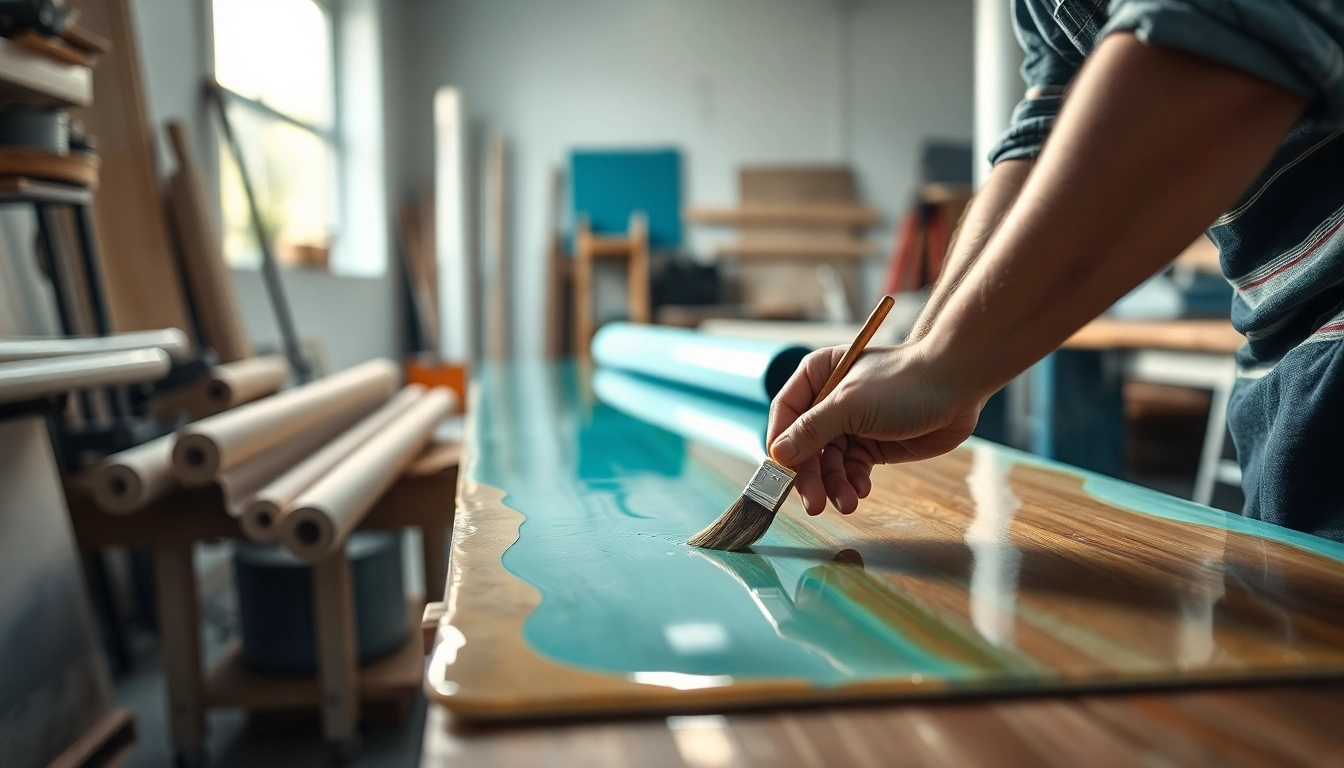Introduction to Fly Fishing Combos
As an angler, your equipment can make a significant difference in your overall fly fishing experience. One of the most essential items that every fly fisherman should consider is the fly fishing combo. This all-in-one package typically includes a rod, reel, and line, thoughtfully matched to provide the best performance and ease of use right from the start. In this comprehensive guide, we will explore everything you need to know about fly fishing combos, ensuring you make an informed decision whether you are just starting or looking to upgrade your gear.
What is a Fly Fishing Combo?
A fly fishing combo is a pre-packaged set of fly fishing gear that is designed to work together seamlessly. It generally includes a fly rod, a fly reel, and an appropriate fly line, all selected to match one another for optimal performance. These combos are particularly popular among beginners who may feel overwhelmed by the myriad of choices available in the fly fishing market. By choosing a combo, anglers get a well-balanced setup that is easy to use right out of the box.
Benefits of Using a Fly Fishing Combo
There are numerous benefits to using a fly fishing combo, especially for those new to the sport. First and foremost, ease of selection is a significant advantage—you won’t need to spend hours researching which rod or reel pairs well together. Combos are designed with balance in mind, ensuring that each component works well in conjunction with the others. Additionally, they often come at a more affordable price point compared to purchasing each part separately. Finally, most combos provide a good quality base setup, enabling new anglers to learn and improve without the burden of investing in high-end equipment initially.
Essential Components of Fly Fishing Combos
Understanding the components of a fly fishing combo can help you appreciate its value better. Most basic combos include:
- Fly Rod: Typically made from materials like graphite for lightweight and strong properties, the length and action of the rod can vary depending on the intended use.
- Fly Reel: A critical part of the setup, the reel both holds the fly line and provides the necessary drag to control the fish once hooked.
- Fly Line: The line is designed specifically for fly fishing and comes in various weights, allowing anglers to cast effectively.
Some combos may also include backing (a thin line that sits below the fly line on the reel), leaders (which connect the line to the fly), and tippets (thinner line for enhanced presentation).
Types of Fly Fishing Combos
Freshwater vs. Saltwater Fly Fishing Combos
When considering a fly fishing combo, one critical distinction is between freshwater and saltwater combos. Freshwater combos are generally lighter and designed to target species like trout, panfish, and smallmouth bass. These setups usually have lighter rods and lines, catering to the delicate presentations needed in rivers and lakes.
In contrast, saltwater fly fishing combos are built for heavier use. They require tougher materials to withstand saltwater corrosion and are often heavier to target larger species such as tarpon, striped bass, and bonefish. The fly line used also differs; saltwater line is typically denser and more durable, ensuring it can withstand the rigors of a marine environment.
Beginner vs. Advanced Fly Fishing Combos
Newcomers to fly fishing benefit greatly from beginner-friendly combos, which are simplified in terms of components and setup. These kits often include everything you need and are designed to be user-friendly, with a focus on teaching essential fly fishing techniques.
Advanced anglers may require specialized equipment tailored to their specific fishing styles or target species. These combos may include premium materials that offer better sensitivity, performance, and lighter weight, ultimately giving seasoned fishermen the tools they need to excel.
Specialized Combos for Different Species
Many anglers are interested in particular species, prompting them to invest in specialized fly fishing combos. For instance, those targeting trout may choose a lightweight rod with a specific action suited for casting smaller flies. In contrast, anglers looking to catch larger species, like salmon or pike, might need a heavier setup that can handle more substantial line weights and larger flies.
Furthermore, a specialized combo can help enhance your efficiency. With the right tools meant for specific species, you can increase your chances of success and improve your overall fishing experience.
Choosing the Best Fly Fishing Combo
Factors to Consider When Selecting a Combo
When it comes to choosing the appropriate fly fishing combo, several factors come into play:
- Skill Level: Your experience level will vastly influence your choice. Beginners should opt for simpler, more forgiving setups, while advanced anglers may seek equipment that enhances their existing skills.
- Target Species: Always consider what you will be fishing for, as this will dictate the type of rod, reel, and line that will be most effective.
- Environment: Whether you fish in freshwater lakes, rivers, or saltwater can significantly affect your gear choices. Certain materials and weights are better suited for specific environments.
- Budget: Determine your budget upfront. Entry-level combos are available at lower price points, while specialized combos can be considerably more expensive.
How to Match Your Combo to Fishing Conditions
The fishing conditions you encounter can determine what combo works best. For example, windy conditions often require a heavier fly line and rod to combat wind resistance during your casts. Alternatively, if you’re fishing in calm waters, a lighter setup might be more suitable, allowing greater precision and delicacy in your casting.
Moreover, understanding water depth and the types of insects present can affect choice. A deeper river may require a sinking line to reach fish at the appropriate depths, while targeting surface feeders might call for a lighter floating line.
Tips for Balancing Price and Quality
Finding a fly fishing combo that balances quality and price can sometimes be challenging. Here are a few tips to help navigate this landscape:
- Research before buying: Read reviews and seek recommendations to find the best value for your money.
- Consider long-term investments: Investing in a quality combo may be more economical in the long run, as it often requires fewer replacements or upgrades.
- Be wary of extremely cheap options: While saving money is essential, extremely low-cost combos often compromise on design and materials, ultimately impacting performance.
Maintaining Your Fly Fishing Combo
Regular Cleaning and Care Tips
Maintaining your fly fishing combo is crucial to prolonging its lifespan and ensuring optimal performance. Here are some best practices:
- Rinse after use: If you have used your gear in saltwater, be sure to thoroughly rinse both the rod and reel with freshwater to eliminate any salt deposits.
- Inspect your line: Regularly checking your fly line for nicks or abrasions can help prevent potential issues during fishing outings.
- Store correctly: Ensure your fly combo is stored in a cool, dry place, away from direct sunlight, to prevent deterioration of materials.
Storing Your Fly Fishing Combo Correctly
Proper storage is necessary to keep your fly fishing combo in top condition. It’s best to disassemble your combo, storing the rod in a protective sleeve and the reel separately to avoid any entanglements or damage. Ensure that lines are coiled neatly to prevent twists or kinks that can affect casting accuracy and distance.
Common Issues and How to Fix Them
Even with regular maintenance, issues can arise. Common problems include:
- Line tangles: To fix this, carefully untwist and detangle your fly line. If twists persist, it may be necessary to run the line through your fingers while gently pulling it straight.
- Reel drag issues: If your drag is inconsistent or too tight, adjust the drag system slowly and methodically, ensuring it functions correctly before heading out.
- Rod guides malfunction: If you notice a guide that is bent or cracked, it may need to be replaced. Many retailers carry replacement guides that you can install with a little know-how.
Enhancing Your Fly Fishing Experience
Essential Accessories to Pair with Your Fly Fishing Combo
Enhancing your fly fishing experience goes beyond choosing the right combo. Here are a few accessories that pair well with your setup:
- Fly Box: A quality fly box is essential for storing and organizing your flies efficiently.
- Leaders and Tippets: Having an assortment of different leader lines and tippets can improve your effectiveness in various fishing environments.
- Landing Net: A good landing net allows you to efficiently catch and release fish while minimizing their stress.
- Polarized Sunglasses: These glasses help reduce glare from the water’s surface, allowing you to see fish and underwater structures more clearly.
Techniques to Improve Your Casting
Good casting techniques are vital for successful fly fishing. Here are some techniques to improve your casting:
- Practice the double haul: This technique involves pulling the line with your rod hand while also using your other hand to create additional speed and distance.
- Focus on your wrist: Using your wrist instead of your entire arm for casting can create more accurate and refined casts.
- Watch instructional videos: There are numerous resources available online to help you learn critical techniques from experts.
Resources for Ongoing Learning and Improvement
Continuous learning is essential for any angler looking to improve their skills. Consider utilizing these resources:
- Local workshops: Many fly shops offer workshops focusing on casting techniques, knot tying, and better understanding fly patterns.
- Fishing forums: Engaging with fellow anglers online through forums can lead to a wealth of knowledge from shared experiences.
- Books and guides: Investing in reputable fly fishing books can help deepen your understanding of techniques, species behavior, and strategies for different environments.



